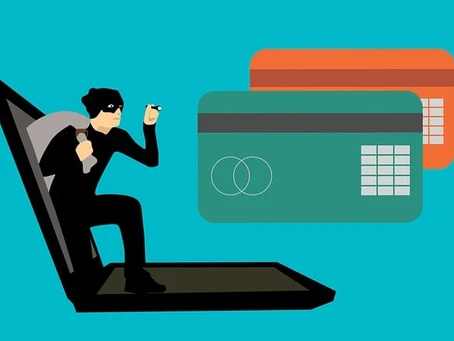All About OTP Phishing
Share

image courtesy pixabay.com
In today’s increasingly digital world, the convenience of online transactions and communications comes with its own set of security challenges. One of the most prevalent and insidious threats is OTP (One-Time Password) phishing. This cybercrime technique preys on unsuspecting users, aiming to steal sensitive information and cause damage to their digital assets. In this blog, we will examine OTP phishing, exploring its mechanics, consequences, and, most importantly, how you can protect yourself against it.
Understanding OTP Phishing
OTP phishing is a form of social engineering attack where cybercriminals trick individuals into revealing their one-time passwords. These one-time passwords are typically generated by a legitimate service, such as a banking institution, email provider, or two-factor authentication system. They add an extra layer of security by requiring users to enter a unique code sent to their mobile device or email address. This code is valid only for a short period, making it difficult for attackers to gain access to an account without the user’s knowledge.
The mechanics of OTP phishing often involve the following steps:
1. Initial Contact:
Attackers usually initiate contact through phishing emails, text messages, or fake websites that closely mimic legitimate ones. These messages often claim that there is an urgent matter requiring the user’s attention, such as a security breach or account suspension.
2. Deception:
Once the user clicks on the link provided in the message or responds to it, they are taken to a fraudulent website that closely resembles the target service. This is where the deception begins.
3. Credential Harvesting:
Users are prompted to enter their login credentials, including usernames and passwords, as they would on the real site. Attackers may employ various tactics to make the fake login page seem convincing, such as using similar logos, layouts, and web addresses.
4. OTP Request:
After obtaining the login credentials, the fake website prompts the user to enter their OTP. This is often explained as an additional security measure due to the supposed security incident mentioned earlier.
5. Data Theft:
Once the user enters the OTP, the attackers capture it in real-time. With both the login credentials and OTP in hand, they can access the victim’s account, steal sensitive information, or conduct unauthorized transactions.
Consequences of Falling Victim to OTP Phishing
Falling victim to OTP phishing can have dire consequences, both financially and personally:
1. Financial Loss:
Attackers often use the stolen information to make unauthorized transactions, drain bank accounts, or engage in fraudulent activities that can lead to substantial financial losses.
2. Identity Theft:
OTP phishing can also pave the way for identity theft. With access to personal information, cybercriminals can open new accounts, take out loans, or commit other crimes in the victim’s name.
3. Privacy Invasion:
Beyond financial implications, the breach of personal data can result in a profound invasion of privacy. Attackers may use the stolen information for blackmail, harassment, or other malicious purposes.
4. Reputation Damage:
If a victim’s online presence is compromised, their reputation can suffer greatly. For businesses, this can lead to customer trust erosion and significant reputational damage.
5. Emotional Distress:
Experiencing a cyberattack can be emotionally distressing, leading to anxiety, depression, and a sense of violation.
Protecting Yourself Against OTP Phishing
To protect yourself against OTP phishing attacks, you must adopt a proactive and vigilant approach to online security. Here are some effective strategies to protect yourself:
1. Verify the Source:
Always verify the legitimacy of any communication that requests sensitive information, especially OTPs. Check the sender’s email address, look for typos and grammatical errors, and contact the organization directly using official contact information.
2. Use Strong Authentication:
Whenever possible, enable multi-factor authentication (MFA) on your accounts. MFA adds an extra layer of security by requiring multiple forms of verification, such as a password and a fingerprint, before granting access.
3. Educate Yourself:
Stay informed about the latest phishing techniques and scams. Familiarize yourself with common red flags, such as unsolicited emails or messages, generic greetings, and requests for sensitive information.
4. Secure Your Devices:
Keep your devices, including smartphones and computers, up to date with the latest security patches and antivirus software. Regularly update your operating system and apps to minimize vulnerabilities.
5. Beware of Unsolicited Links:
Avoid clicking on links or downloading attachments from unknown or suspicious sources. Hover over the links to preview the destination URL before clicking.
6. Use a Password Manager:
Employ a reputable password manager to generate and store complex, unique passwords for each of your accounts. This prevents the use of the same password across multiple services.
7. Stay Informed:
Keep abreast of security news and advisories from trusted sources. Organizations often issue alerts about ongoing phishing campaigns or security threats.
8. Report Suspicious Activity:
If you receive a phishing email or encounter a suspicious website, report it to the relevant authorities or the organization being impersonated.
9. Regularly Monitor Accounts:
Periodically review your bank and online account statements for any unauthorized transactions or suspicious activity. The sooner you detect and report such incidents, the better your chances of mitigating damage.
Final Note
OTP phishing is a pervasive and evolving threat in the digital domain. However, with vigilance, education, and the implementation of security best practices, you can significantly reduce your risk of falling victim to this cybercrime. Remember that your online security is a shared responsibility between you and the organizations that provide your online services. By staying informed and taking proactive measures, you can protect your digital identity and enjoy the benefits of the digital age without the fear of falling prey to OTP phishing attacks.


